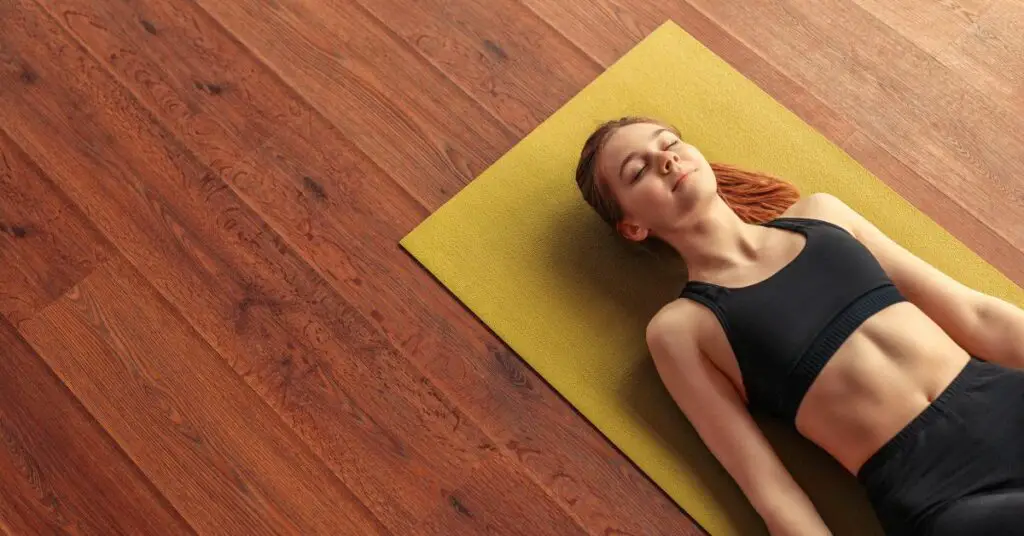There are many different ways to meditate, and you don’t necessarily have to sit in a lotus position to do it effectively. In fact, sometimes it can be more comfortable – and even more effective – to lie down or sit in a regular chair while you meditate.
Talking about the seating positions for meditating, most people wonder if it is better to meditate lying down or sitting. The effective choice turns out to be Seating because it provides the perfect balance of comfort and alertness.
In this article, we’ll explore the pros and cons of both lying down and sitting meditation, so you can decide which is best for you.
How to Meditate?
There’s no one right way to meditate. Different approaches work for different people. The key is to find a method that works for you and stick with it.
Here are some tips to get you started:
1. Pick a quiet spot. Meditation is best done in a quiet place where you won’t be disturbed.
2. Sit comfortably. You can meditate sitting in a chair or on the floor. Just make sure you’re comfortable so you won’t be distracted by your body.
3. Close your eyes. This helps to focus your attention inward.
4. Focus on your breath. Inhale and exhale slowly and deeply.
5. Let thoughts come and go. Don’t worry if your mind wanders. Just gently bring your attention back to your breath.
With practice, you’ll be able to quiet your mind and find inner peace.
The Different Seating Positions For Meditation
When you first start practising meditation, you may not be sure what the best way to sit is.
There are many different ways to sit for meditation, and the best way for you may depend on your personal preferences. Here are some of the most popular seating positions for meditation:
1. The cross-legged position: This is probably the most popular way to sit for meditation. To do this, simply sit with your legs crossed in front of you. You can also sit with one leg crossed over the other or with both legs resting on the ground.
2. The lotus position: This is a more advanced sitting position and may not be comfortable for everyone. To do this, sit with your legs crossed and place your feet on your thighs.
3. The half-lotus position: This variation of the lotus position is a bit easier to do. To do this, sit with one leg crossed in front of you and the other leg resting on the ground.
4. The seiza position: This is a traditional Japanese sitting position. To do this, sit on your heels with your legs tucked under you.
5. The chair position: This is a good option if you have trouble sitting on the floor. Simply sit in a chair with your feet flat on the ground and your hands resting in your lap.
Whichever position you choose, make sure that you are sitting up straight with your spine nice and tall. This will help you to stay alert and focused during your meditation.
***
The Benefits And Drawbacks of Lying Down Meditation
Lying down meditation has been around for centuries and is still practised by many people today.
This type of meditation involves lying on your back with your eyes closed and focusing on your breath. There are many benefits to this type of meditation, but there are also some drawbacks that you should be aware of before you start.
The main benefit of lying down meditation is that it allows you to focus on your breath and the present moment. This can be very helpful for people with a lot of anxiety or constantly thinking about the past or the future. When you focus on your breath, it can help to calm your mind and body. It can also help to reduce stress and tension in your muscles.
Another benefit of lying down meditation is that it can help to improve your sleep. If you have trouble sleeping, this type of meditation can be very helpful. It can also help to reduce nightmares and night terrors.
However, you should be aware of some drawbacks to lying down on meditation. One of the biggest drawbacks is that staying awake during this type of meditation can be very difficult. If you do fall asleep, you may not get the full benefit of the meditation.
Another drawback is that lying down in meditation can sometimes make you feel dizzy or lightheaded. If this happens, you should stop the meditation and sit up slowly.
Overall, lying down meditation can be a great way to improve your health and well-being. However, there are some things that you should keep in mind before you start. If you have any concerns, you should talk to your doctor before you begin.
The Benefits And Drawbacks of Sitting Meditation
Sitting meditation has been around for centuries and is still practised by many people today.
This type of meditation involves sitting with your eyes closed and focusing on your breath. There are many benefits to this type of meditation, but there are also some drawbacks that you should be aware of before you start.
The main benefit of sitting meditation is that it allows you to focus on your breath and the present moment. This can be very helpful for people with a lot of anxiety or constantly thinking about the past or the future. When you focus on your breath, it can help to calm your mind and body. It can also help to reduce stress and tension in your muscles.
Another benefit of sitting meditation is that it can help to improve your posture. If you have poor posture, this type of meditation can be very helpful. It can also help to reduce back pain and make you more flexible.
However, you should be aware of some drawbacks to sitting in meditation. One of the biggest drawbacks is that staying awake during this type of meditation can be very difficult. If you do fall asleep, you may not get the full benefit of the meditation.
Another drawback is that sitting in meditation can sometimes make you feel dizzy or lightheaded. If this happens, you should stop the meditation and stand up slowly.
Overall, sitting meditation can be a great way to improve your health and well-being. However, there are some things that you should keep in mind before you start. If you have any concerns, you should talk to your doctor before you begin.
How to Choose The Right Posture For Your Meditation?
When you’re first starting out with meditation, it can be tricky to know what the best posture is. There are a lot of different options, and it’s hard to know which one will work best for you.
Here are a few things to keep in mind when choosing the right posture for your meditation practice:
1. Comfort is key. You should be comfortable enough to sit for long periods of time without shifting around or getting tense.
2. Your spine should be straight. This will help you to maintain good posture and avoid back pain.
3. Your head should be level with your shoulders. Keep your chin slightly tucked in so that your neck is in line with the rest of your spine.
4. Relax your shoulders and let your arms fall to your sides.
5. If you’re sitting on the floor, cross your legs in a comfortable position. If you’re sitting in a chair, make sure both feet are flat on the ground.
These tips should help you find the best posture for your meditation practice. Remember, comfort is key, so make sure you’re not putting yourself in any discomfort. It will be very difficult to focus on your meditation if you are.
Frequently Asked Questions Related to Lying Down or Sitting Meditate
1. Is it okay to lie down while meditating?
You can meditate lying down any time you’d like to. There are no hard and fast rules about how to meditate. Some people find it helpful to sit up straight with their eyes closed, while others may prefer to lie down or do walking meditation.
Experiment until you find a comfortable position that allows you to focus on your breath and your thoughts.
2. How long should you meditate per day?
A good rule of thumb is to meditate for around 45 minutes per day if you’re an experienced meditator or shorter if you’re new to meditation.
That said, it’s important not to push yourself too hard when it comes to meditation. If you find that you’re struggling to focus or that your mind is constantly wandering, try reducing the amount of time you spend meditating until you feel more comfortable. Meditation for 10 minutes perfectly is better than an hour without focus!
3. Why should you not meditate in bed?
There are a few reasons why you should not meditate in bed. First of all, it’s not the most optimal position for meditation. You’re more likely to fall asleep if you’re sitting or lying down, which defeats the purpose of meditation.
Second, if you associate your bed with sleep, it can be difficult to relax and focus during meditation when you’re in that space. It’s best to create a separate meditation space for yourself where you can associate peace and relaxation with that specific area.











